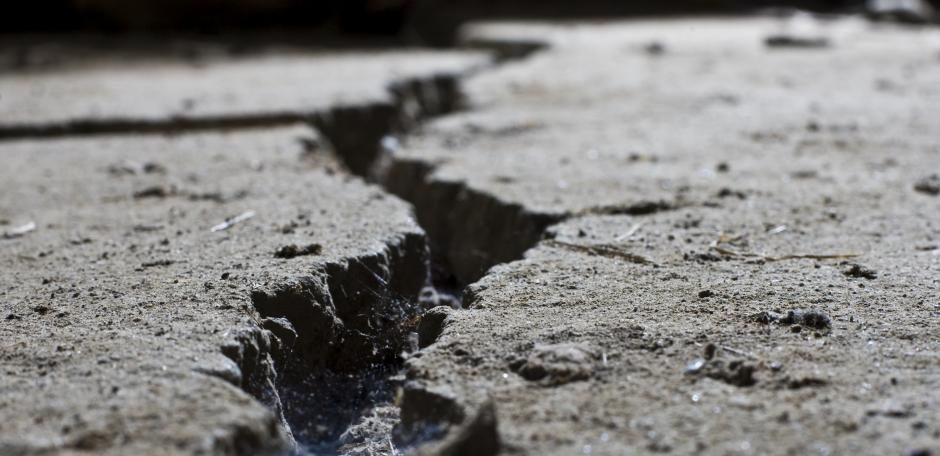Be Earthquake Safe
BE EARTHQUAKE SAFE
For people living and working in San Mateo County, we all know the next big earthquake is not “if” but “when.” Now is the time to create your family communications plan, compile your earthquake kit, sign up to receive critical information and practice the “Drop, Cover and Hold” method recommended by the Earthquake Country Alliance.
Make A Communications Plan
There’s a good chance your family and loved ones won’t be together when an earthquake strikes, so plan ahead on how you will contact one another. Here are some ideas:
- Pick two places to meet if you become separated—one near your home, and one outside your neighborhood.
- Check with your child’s school and know their earthquake plan including how to contact the school if you can’t get there.
- Choose an out-of-state relative or friend as a check-in contact for everyone to call. It is often easier to make an out-of-state call than a local call during an emergency.
- Complete a Contact Card for each family member or loved one and have each person keep the card with them at all times; maybe in a wallet, purse, or backpack. Include family member and loved ones phone numbers as well as the out-of-state contact, and important emergency numbers like 9-1-1.
- Teach family members and loved ones to use text messaging. Text messages can often get around network disruptions when a phone call might not be able to get through.
- Practice your plan.
Create Emergency Supply Kits
You may be at home or away from home when an earthquake strikes, so put together emergency supply kits for your home, car, and workplace. Check your kits once a year, and replace water and expired food items.
CAR KIT
Create a kit for each car with:
- Flashlight with extra batteries
- First aid kit
- Blanket
- Car’s user manual
- Bottled water and nonperishable foods, like granola bars
- Heavy duty medical scissors
- Local map
- Extra shoes
- Gloves
HOME KIT
Store the following supplies in a portable container near an
exit:
- One week supply of non-perishable food
- Manual can opener and eating utensils
- Water—one gallon per person per day. Water should be replaced every six months if it is not commercially bottled
- Water purification kit—in case you are not able to boil water
- Flashlight, light sticks, portable radio or TV, and extra batteries
- Whistle
- First aid kit and manual—include prescription drugs, if necessary
- Garbage bags and disposable gloves
- Sanitation and hygiene items (moist towelettes, toilet paper, etc.)
- Matches in a waterproof container
- Heavy duty medical scissors
- Extra clothing and blankets
- Photocopies of ID, credit cards, and emergency phone numbers in plastic bags
- Copies of critical papers and photos in a “grab and go” box
- Special items (eyeglasses, hearing aid batteries, etc.)
- Infant items and pet supplies, if necessary
- Tools: Adjustable wrench (to turn off gas), fire extinguisher and local map
- Cash
WORK KIT
Create your own workplace kit or ask your supervisor if supplies
can be made available:
- Flashlight with extra batteries
- Battery-powered radio
- Enough non-perishable food for 1 day
- Water – 1 gallon
- First aid kit and prescription drugs, if necessary
- Complete change of clothing
- Personal hygiene items
- Mylar blanket (emergency thermal blanket)
- Heavy duty medical scissors
- Family and loved ones emergency contact information
Review Earthquake Safety Checklist
It’s important to plan ahead of an earthquake with a safety checklist of things to do BEFORE an earthquake hits to better protect yourself, your family and your property.
- Practice Drop, Hold and Cover. This means: DROP under something sturdy and away from windows, like a table, HOLD on to it, and COVER your eyes by pressing your face against your arm. Teach everyone in your family to do this.
- Fasten shelves securely to walls.
- Place large or heavy objects on lower shelves.
- Store breakable items such as bottled foods, glass, and china in low, closed cabinets with latches.
- Fasten heavy items such as pictures and mirrors securely to walls and away from beds, couches and anywhere people sit.
- Secure your water heater, refrigerator, furnace, and gas appliances by strapping them to the wall studs and bolting to the floor. If recommended by your gas company, have an automatic gas shut-off valve installed that is triggered by strong vibrations.
- Store weed killers, pesticides, and flammable products securely in closed cabinets with latches and on bottom shelves.
Get Informed
Register for SMCAlert, an alert notification system that is used to immediately contact you during urgent or emergency situations with useful information and updates by sending text messages to your email accounts, cell phones or smartphones/handheld devices.
Follow the Health System on Facebook and Twitter to receive critical information before, during and after a disaster.
